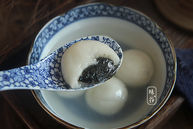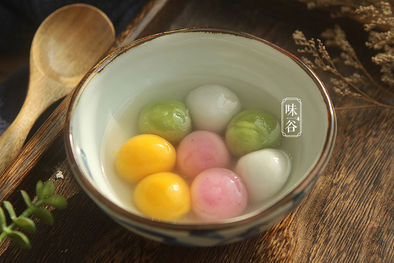

Chinese Food Blog

Festivals

Spring Festival
The most solemn and characteristic traditional Chinese folk festival, it marks the end of the old year of the lunar calendar and the beginning of a new year.“Certain dishes are eaten during the Chinese New Year for their symbolic meaning. Lucky food is served during the 16-day festival season, especially on Chinese New Year dinner on New Year's Eve, which is believed to bring good luck for the coming year.
During Chinese New Year, certain dishes have a symbolic meaning. People consume dishes that symbolize best of luck as during 2-week festival, notably during the New Year's Eve banquet, and eating these delicacies is said to bestow good luck for the next year. These traditional Chinese New Year foods hold auspicious symbolism based on their pronunciations or looks. Not only do the foods themselves matter, but then so do their preparation, and therefore how they are enjoyed.People frequently eat dumplings, nian gao (the same name as rice cake), spring rolls, peanuts, chicken, duck, and fish during the Chinese New Year.
Rice is abundant in southern China, so in a traditional sense, southern Chinese people usually eat rice cakes to celebrate the New Year. The reason for this comes from the sound of the word "nian gao," which means a higher standard of living each year in Chinese. Rice cakes are made from glutinous rice flour and can be cooked by frying, steaming, stir-frying or boiling. With the development of society and culture, it is now popular for some people in northern China to eat rice cakes during the spring festival.
In China, Spring Rolls, also called Spring Cake by some northerners, have a long history. It's said that as early as the Eastern Jin Dynasty (316-420), people ate 'Spring Plate' consisting of flour-made cakes at the center with green vegetables around it. In accordance with the development of cooking techniques, the traditional 'Spring Cakes' have evolved into the present day golden spring rolls made of thin flour wrappers filled with savory or sweet fillings, meat or vegetables.

[3] Dumplings 2
Fish, usually of a local variety, is an important item on the dinning table of thousands of families on the eve of Chinese New Year. Fish is pronounced 'yu' in Chinese, and it is also a gift exchanged between the family members. Some people in southern China eat only the middle part of the fish on New Year's Eve, leaving the head and tail until the following day to symbolize completion. Meanwhile, it is especially important to place the fish's head at the elders when placed on the dining table.
[1] Spring festival 1&2


[2] Dumplings

On New Year's Eve, northern Chinese people frequently eat dumplings (jiaozi). The reason for this is that in Chinese, "dumpling" sounds like a method of bidding goodbye to the previous year and greeting the new one. Dumplings are always made before midnight, that is, at the end of the previous year. The first hour of the Lunar New Year is then spent eating them. Traditionally, a one yuan, five, or ten cent coin was placed in certain dumplings as a good luck charm for the dumpling eater, but nowadays, it's frequently a peanut, candy, or something similar. It is thought that having such dumplings will bring good luck and money in the New Year.

[4] Niangao (Rice Cake)

[5] Rolls 1

[6] Rolls 2


[7] Fish


Lantern Festival
[8] Yuanxiao
The fifteenth day of the first lunar month is the Lantern Festival, also known as the Shangyuan Festival, Yuanye, and Lantern Festival. On the Lantern Festival, also known as Yuanxiao Festival, people have had the custom of eating traditional food, highlighted by the Yuanxiao dumpling made of glutinous rice powder and filled with beans, brown sugar and a variety of fruits and nuts, since the Song Dynasty (960-1279). They are eaten on the last day of the Chinese New Year, since they are also called 'Tangyuan' or 'Tuanyuan' among the Chinese, pronounced similar to 'Tuanyuan' (reunion).

[9] Light

Dragon Boat Festival
During the Dragon Boat Festival, the day of Qu Yuan, many Chinese families will eat Zongzi to remember the national hero,who drowned in the Miluo River after his state was defeated. The Dragon Boat Festival is the day of Qu Yuan's death. Zongzi is a pyramid-shaped dumpling made of glutinous rice and wrapped in bamboo or reed leaves, usually sweet with dates in northern China. However, it can be salty as well. In southern China, people usually eat salty zongzi. They usually use meat or nuts as the filling in the middle of zongzi. Eating zongzi is a special feature, and there is also the custom of eating garlic. Ai, calamus and garlic are called "Three Friends of Dragon Boat Festival".
Mid-Autumn Festival
The Mid-Autumn Festival is a traditional festival. Mooncakes, persimmons, osmanthus and taro are essential for this festival. There is also a custom of eating crabs in Jiangsu and Zhejiang. There are three main activities of the Mid-Autumn Festival, the first being the offering of sacrifices to the moon, the second being the eating of moon cakes and the other being the admiration of the moon. The mooncakes are usually round, as the circle represents harmony and reunion. They also signify family reunion and a bright future. Traditionally, they are made with sweet nuts and beans and have a golden crust, but nowadays there are many variations of fillings, such as mayonnaise, coconut sauce and savoury ones, etc. In recent years, they have been improved and the most popular among young people is the milk tea flavour. The most popular flavour in recent years is milk tea. The crust is beautifully carved with many designs.

Bibliography
[2] Cindy (2021), Chinese New Year Food: Top 7 Lucky Foods and Symbolism [online] available at: https://www.chinahighlights.com/travelguide/chinese-food/chinese-new-year-food.htm [Accessed: 17/12/2021]
[3] Cindy (2021), Chinese New Year Food: Top 7 Lucky Foods and Symbolism [online] available at: https://www.chinahighlights.com/travelguide/chinese-food/chinese-new-year-food.htm [Accessed: 17/12/2021]
[5] Cindy (2021), Chinese New Year Food: Top 7 Lucky Foods and Symbolism [online] available at: https://www.chinahighlights.com/travelguide/chinese-food/chinese-new-year-food.htm [Accessed: 17/12/2021]
[7] Cindy (2021), Chinese New Year Food: Top 7 Lucky Foods and Symbolism [online] available at: https://www.chinahighlights.com/travelguide/chinese-food/chinese-new-year-food.htm [Accessed: 17/12/2021]
[9] (2019), Lantern Festival lanterns, why do you hang lanterns on Lantern Festival? Xinzuo Website [online] available at: https://www.zuixingzuo.net/minsu/zhongguo/d282593.html [Accessed: 17/12/2021]





